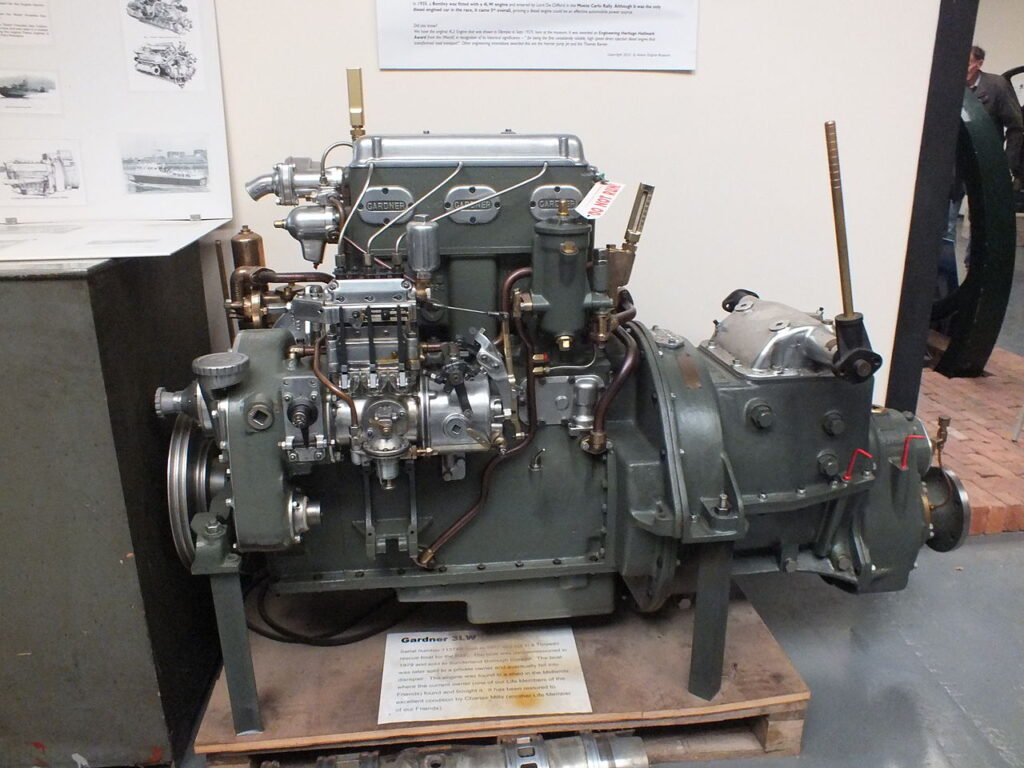
Introduction
This guidance applies to boats with inboard diesel engines, and not to outboard engines. When you buy a used boat, you want to make sure that the engine is good (unless you are buying a salvaged vessel). Inboard diesel engines are generally reliable.
Of course sailboat engines are less heavily used than powerboat engines, and the risk and consequence of failure is less severe.
If you are employing a marine surveyor then they may give you an ‘off the record’ opinion as to whether it’s worth spending money on specialist engine surveys.
Where do you start?
So how do you find out if the engine is good when you’re buying a used boat? Ultimately, you have to sea-test the boat you are buying, but there are several basic engine checks you can make on first pass, even if the boat is ashore in the boatyard.
If the boat is ashore, then a cooling water supply will have to be set up (if the boat has keel cooling then this other ways will have to be found). This can be done with a hose pipe, from a tap but make sure that the seller (or his agent) agrees to this, and get them to do it). OK, so we have a cooling system ready.
The most basic check of course is to examine the engine maintenance log.
The service history or engine log
A careful owner will keep a service log even if the work is done by himself or herself. There should be invoices for parts that have been replaced and perhaps for specialist work and servicing that has been done – work such as tappet adjustment and injector setting.
If there are no maintenance records then be suspicious. It may not prove to be an issue – the engine may very well be sound. But when it comes to negotiating the sales price you are always able to point out that lack of a service history casts some doubt over the soundness of the engine.
The log should also record the number of hours it’s (they’ve) been used. Is there a fuel consumption history? Increasing consumption over a few years is an indicator of problems,
Simple visual checks of a diesel engine
1. Does the engine look clean and well-maintained? An owner who cares will have a clean and well painted engine, so that any oil or water leaks are immediately visible. If the engine looks dirty, then be on your guard.
2. Check the lub oil – is it clean and is the level up to the full mark?
3. Are there signs of water in the lub oil?
4. If you can, check the transmission oil – level and colour – grey or milky means there’s water in it and that’s bad news.
5. Is the alternator belt properly adjusted? Typically, there should be about 15mm (5/8”) of give on a 30cm (12 “) span of belt when pressed with your finger. This is a rough test only.
6. Does (Do) the engine(s) have an hours meter? Check the hours meter. Yes, they can be faked or replaced, but most owners are genuine. As a guide, a really good truck engine which is really well looked after will do half a million miles without a problem. At an average speed of thirty miles per hour, say, that’s more than fifteen thousand hours.
Starting up
7. Does the engine start easily? Obvious, but have you been told that the battery is flat. It shouldn’t be flat if the seller wants to make a sale. It could mean that the starter motor is faulty, or cables are in poor condition.
8. Is there a lot of blue smoke when the engine first starts? If there is, then this could indicate, for example, that the valve guides are worn, or cylinders/piston rings are worn. With diesels, some blue smoke is inevitable, but it should not be like a thick fog.
9. Check that the alternator is charging properly – the charge light should be out and the ammeter should be showing charging current.
Running temperature and smoke
10. When the engine is properly warmed up (check the temperature gauge – diesels run at about 82 deg C (180 deg F), does it sound good? Without being able to work the engine – driving the boat – it may not warm up properly. After 20 minutes under load, then the engine should be up to temperature. If you cannot get the engine up to temperature, then that could be a problem. Engines running cold will have excessive wear.
11. What color is the exhaust smoke? If it’s white then that’s not a good sign. Some blue smoke is fine – a slight haze would be right. Black smoke indicates unburnt fuel and could be a sign of injection problems (note that black smoke when the throttle is fully open is not usually a problem).
Sounding rough?
12. Does the engine idle smoothly? It should idle at about 700-800 rpm.
13. If you can, look at the engine when it is idling – does it move a lot on its mountings? If it does then there could be one or more soft mountings.
14. Can you see any water leaks from the cooling system? Check the exhaust elbow as well – this is a common failure area where heat exchange water may be injected to cool the exhaust.
15. Can you see any oil leaks from the lubrication system or gearbox?
Smelling ok?
16. Are there any unusual smells?
17. So far so good. If you’ve got this far and want a more detailed check then you can get an engineer to do a compression check on the cylinders. This will take a couple of hours and cost money, but it’s worth it.
Lab analysis
18. The next check is lubrication oil quality, and again will cost money. You really only need to do this if you love the boat, but are doubtful about the engine or the owner. You can get this done at a lab – you surveyor should be able to arrange it for you. The lab will need to know the brand and type of oil that the owner uses, and will then report on the metal content. This is not infallible – the oil might have been changed recently, and best results are obtained when two samples are compared. However, you can ask the owner how many hours the engine has run since the last oil change.
If the owner doesn’t know the hours, then that’s not a good sign and suggests evasion or sloppy maintenance. Some owners might genuinely say, for example, that it is changed twice a year; most owners will note the engine hours (even roughly) in the boat’s logbook and that’s the sign of an owner who cares.
Buying a used boat – the engine sea trial
19. The sea trial. By this time you will have done the visuals and lub oils inspection. If the boat is already afloat and not in the yard then you will want to run the engine up to temperature, check for water leaks from the sterngear and test the gearbox. Be suspicious of excessive vibrations. With your cellphone it’s easy to actually record the sound of the engine and audio analysis by a specialist is possible if in doubt.
20. And when you get back to the dock check the oil levels again and inspect for any signs of water in the oil. Again, just in case.
And one more thing before I go – is it the right engine for your needs? If you’re going to be using the boat off the ‘beaten track’ then simpler is better.
Electronics go wrong and need specialists to fix. A wifi key? I’ve seen those lost and people’s lives endangered, mid-Pacific and a 400 mile tow.
Maybe it all sounds like a bit of a nightmare, but most marine diesels are reliable workhorses if cared for. If you still have doubts then go online and check forums for problem with the particular engine model.
If you are thinking about buying a boat, maybe even to live on, then check out my special article on the subject, here.



